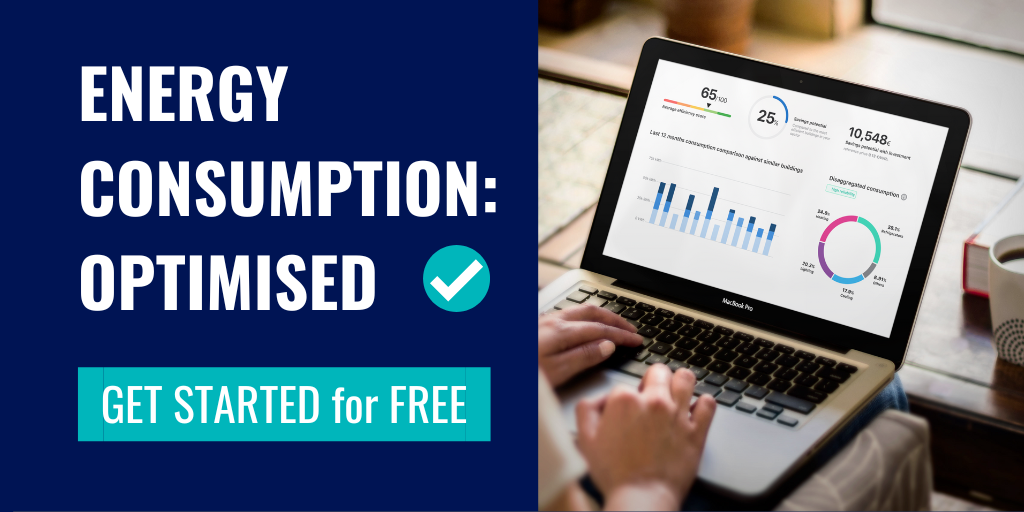You probably noticed that data points are kind of a big deal. It’s important to understand this concept for a few reasons: not only to ensure a well-defined budget for your energy platform but also to create a solid energy monitoring structure and plan a watertight savings strategy. So let’s unpack the data point concept together!
What is a data point?
A data point is a single string of data sent by any device, meter or sensor in your building.
The concept isn’t actually exclusive to DEXMA, so it’s good for you alpha energy managers to get a solid understanding of data points in order to deal with different projects, vendors and of course, client needs.
The best way to understand a data point is to think about it as a “variable” in a mathematical or scientific way. A typical math formula usually involves a few variables. When you’re managing energy data, there are a bunch of different variables that you are likely interested in tracking.
For example, you may want to get active and reactive electricity readings from two different meters. That’s two variables per meter, which means you’ll end up with four data points.
So, first your first important takeaway with data points: one meter does not automatically equal one data point.
Data Points in Energy Management: Real Examples
Since the previous example might be overly simplistic, let’s take a few from REAL energy management projects so you can get a better idea of how many data points your next project will need.
Project 1: A Factory with Utility Meters
This customer wants to reduce energy and water consumption in their factory. For the first phase of the project, the facility manager only wants to obtain data using utility meters.
Here’s their utility meter list with the desired variables to track:
- 2 Electricity meters (Active energy, reactive energy and demand)
- 2 Gas meters (Raw volume, normalised volume and energy)
- 1 Heat meter (Thermal energy)
- 1 Water meter (Water volume)
- 1 External temperature (Temperature)
Now it’s time to make some simple calculations. With only 15 data points, you are all set: 6 for electricity, 6 for gas, 1 for heat, 1 for water and 1 for temperature.
Project 2: Real Estate Project with 100 Locations and Submetering<
Your real estate customer wants to reduce overall consumption and provide a better service to their tenants by giving them access to their consumption data and sending bills on time. For each of the 100 buildings we have:
- 1 Electricity utility meter (active energy, reactive energy and demand)
- 1 HVAC meter (active energy, reactive energy and demand)
- 10 Tenant meters (active energy, reactive energy and demand)
So in this case, you will need 36 data points per building, for a total of 3600 data points.
Project 3: Supermarket Chain with Electricity Net Quality Monitoring
In this example, your customer wants to monitor the entire supermarket chain. The catch: in some locations, additional quality variables such as voltage, current, power factor and some three-phase data strings need to be tracked as well.
Let’s see how many data points we need for 100 supermarkets out of which 10 require an in-depth analysis:
- 1 Electricity utility meter (active energy, reactive energy and demand)
- 1 HVAC meter (active energy, reactive energy and demand)
- 1 Lighting meter (active energy, reactive energy and demand)
- 1 Refrigeration meter (active energy, reactive energy and demand)
- 1 External temperature sensor (temperature, humidity)
For the 90 standard supermarkets, we need a total of 1260 data points (90 x 14 data points).
For the 10 stores that require an in-depth analysis, we have this configuration:
- 1 Electricity meter (active energy, reactive energy and demand, power factor, THD, THI, voltage and current for the 3 phases)
- 1 HVAC meter (active energy, reactive energy and demand, power factor, THD, THI, voltage and current for the 3 phases)
- 1 Lighting meter (active energy, reactive energy and demand, power factor, THD, THI, voltage and current for the 3 phases)
- 1 Refrigeration meter (active energy, reactive energy and demand, power factor, THD, THI, voltage and current for the 3 phases)
- 1 External temperature sensor (temperature, humidity)
If we do the math, we see that for each electricity sensor we need 12 data points. As we have 4 of them plus an external temperature sensor with 2 data points, we will use a total of 50 data points per supermarket, so 500 for the deep-monitoring supermarket project.
With a data point-based pricing model, you can choose how to define your project and pay only for what you use.
⚡️ Lightning Round: Data Points FAQ
Here are the most common queries we’ve solved:
- Does the DEXMA platform support the several thousand data points I have in my next project?
Yes indeed! We’re currently supporting more than 32 million data readings per day. That means thousands of data points have already been integrated and are sending data to DEXMA Platform. - Can I distribute my data points among several locations?
With a professional account, you sure can. Starter accounts are built for single-location projects only.
- Can I buy ‘extra’ data points for my license?
Oh, yeah! That’s one of the top advantages of working with SaaS software: it’s 100% flexible and adaptable to your needs. You can upgrade your account with as many data points as you need on-the-go, or get rid of data points you don’t need anymore.
- Why do you charge per data point?
We offer a cloud-based solution to give you an energy analytics platform that’s as fast, reliable, and flexible as it can be. Not only do data points represent data readings, but they also provide value in the form of data storage and data intelligence. That great package deal impacts our hosting pricing, which is the main reason behind data point-based pricing.
- How many data points do I need?
Great question! That always depends on each project, so please understand that we can only give you an accurate answer if you provide us with some essential project details. The main things we need to define as data points are which meters you are using, the goals of your energy management plan and the project budget. If you want a more detailed proposal or help with defining this or other issues that may impact your metering strategy, feel free to contact us at any time.
As you see, data points are closely related to your energy management strategy but also to hardware devices.
Don’t forget that we put together a whole white paper specifically focused on helping you understand hardware for energy management and define the metering strategy that suits your real needs: check it out!





